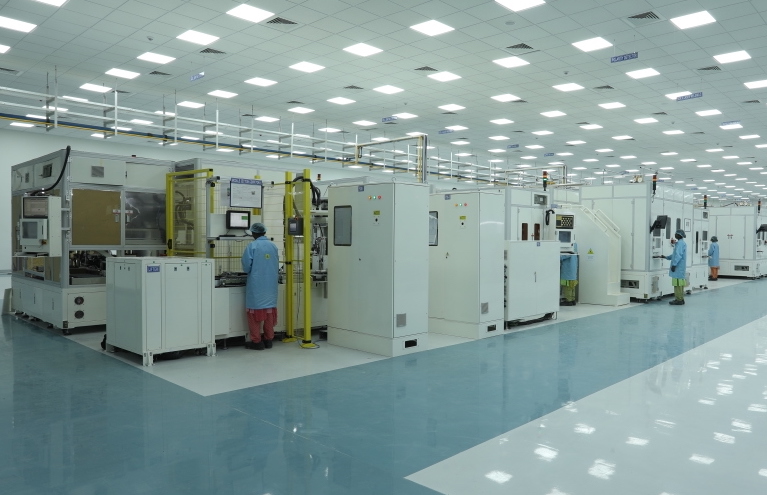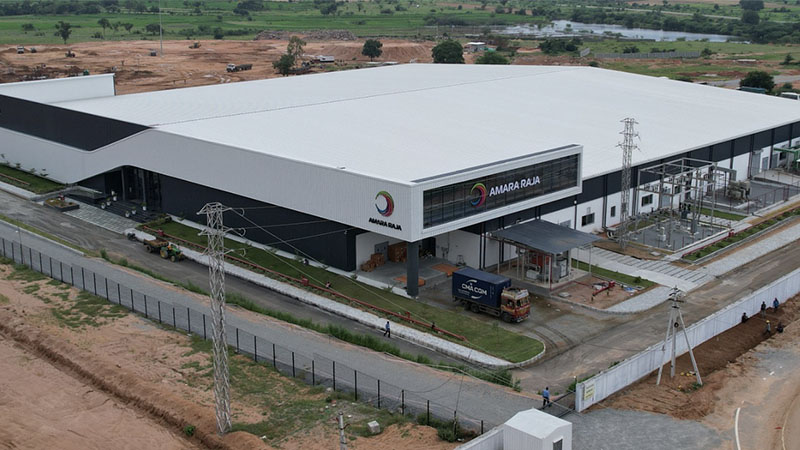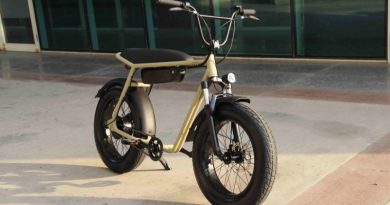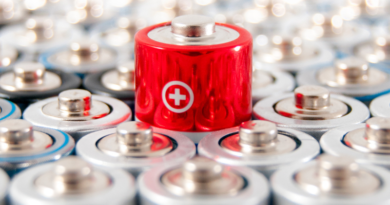Amara Raja’s Pragmatic Route to Lithium-ion Cell Mass Production | Updates since Ground-breaking Ceremony

Last year, in August 2024, Amara Raja held a groundbreaking ceremony for the Customer Qualification Plant (CQP) at its Giga Corridor in Mahabubnagar, Telangana—the designated site for their upcoming lithium-ion cell gigafactory. We got in touch with Vikramadithya Gourineni, Executive Director at Amara Raja Energy & Mobility, to follow up on the progress over the last year.
Vikramadithya shares updates on the commissioning of the Customer Qualification Plant, progress at the Giga Corridor, and the company’s roadmap for lithium-ion cell manufacturing in India.
Could you please share an overall update on the progress at the Amara Raja Giga Corridor since we last spoke in August 2024?
Certainly. When we held the ground-breaking ceremony, we were already running a battery pack plant in that location. Pack operations continue to grow, catering to a range of low-voltage applications for light electric mobility. It is currently employing close to 300 people, in addition to a pack plant we operate in Tirupati for stationary applications.
Both our R&D facility at GMR Aerocity, Hyderabad, and the Customer Qualification Plant at the Growth Corridor are being commissioned now, while the first cell giga factory is currently under construction. We are also in the process of finalizing our plans for new pack lines for passenger vehicles as well as ESS, including a containerization plant. We will share more details about this soon when nomination becomes official.

Could you share the current level of readiness of the Customer Qualification Plant?
We are currently in the process of installation and commissioning of the equipment. The production team is also identified and undergoing training. We aim to commence operations before the end of the financial year.
What form factors and chemistries are to be initially manufactured at the qualification plant?
We have enabled the qualification plant to make both cylindrical and prismatic cells of varying sizes. This includes making prismatic cells in both top terminal and opposing terminal, which has become to be known as a blade cell. We will be working with varying chemistries within the NMC and LFP families.
With that said, the qualification plant is designed to be highly flexible and reconfigurable in contrast to mass production at the giga scale where standardization and efficiency take precedence. While there will be some incremental investment required, we can easily work with newer chemistries like sodium or LMFP and process innovations like dry electrode coating, assuming we are convinced of a market need.
Can you break down the 16 GWh target capacity into expansion blocks—what GWh comes online in each phase?
16 GWh is more of a directional number that we thought out at the time of participating in the PLI. It is not a fixed threshold. While timing may change based on market volatility, I am sure that we will overshoot this number.
The first line, as communicated earlier, is still committed to be a 2170 NMC cell, which will be in mass production in 2027 with a capacity of about 2 GWh. Thereafter, we follow two separate tracks.
- The first is a series of off-the-shelf cells that we believe can cater to general market needs like LEV, Telecom, UPS, ESS, where there has been a good amount of market standardization driven already. We will share details in due course of the phase-wise commercialization of this category.
- The second is made up of customer specific cells that require customization and non-standard dimensions or chemistry. This would be mostly for Auto OEMs. We would not commit any investments without some clear supply nomination for this category.
TDS, Agartas, Waree, Ola, Nash Energy – How do you view the rush of new cell entrants in Gujarat and Tamil Nadu—does it create over-capacity in local production or help validate the market?
I personally view this as a good thing. We have competition in all our industries, so lithium will not be any different. Given the healthy growth expected in the Indian market and the likelihood that not all projects will be successful, I do not feel that there will be any overcapacity. In fact, I think the likely scenario is that there will still be some level of import dependence as most of these projects take some more time to get grounded and produce at high yields.
Despite the investments, the biggest challenge will be for each manufacturer to reach a stage at which they are able to manufacture a quality cell at a commercially viable yield.
While I wish everybody success, we need to take cognizance of the fact that most factories outside of East Asia have failed. We are trying to learn from these failures and do our best to mitigate many of the risks, with the interim step of a CQP before jumping into giga scale production being chief among them.
A positive impact of so many projects coming up is that the ecosystem will also start to take root. Many people are rightfully talking about the raw material supply chain, but one thing often ignored is the process equipment and the talent required to support installation, commissioning, and after-sales service. I look forward to this latter gap getting filled quickly.
Subscribe & Stay Informed
Subscribe today for free and stay on top of latest developments in EV domain.






